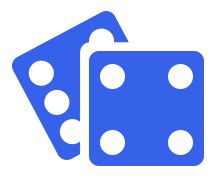Ludo Game Development Company That Builds Addictive Android Apps
We are Professional in Ludo game development

Aaryavarta Technologies is a leading Ludo game development company, creating fast, feature-rich Ludo game apps that scale across Android, iOS, and the web. Our expert Ludo game developers build secure multiplayer frameworks, engaging UI, and monetization-ready platforms designed to retain and entertain. Whether you’re launching a classic board style or a modern twist, we ensure flawless gameplay and backend support. Need browser compatibility? We also specialize as a trusted HTML5 game development company, helping clients deliver cross-platform Ludo experiences that load fast and play smoothly — everywhere.
Whether you want to develop a classic Ludo game or a more advanced Ludo Android game, our expert developers ensure a smooth and user-friendly experience on all platforms.
From intuitive Ludo game design to high-quality Ludo game software, we provide customized solutions to match your business needs.
As a trusted Ludo company, we focus on cross-platform compatibility and real-time multiplayer functionality to keep players engaged and coming back for more.
Hire Expert Ludo Game Developers for Multiplayer, Real-Cash & Custom Apps
As a leading Ludo game development company, Aaryavarta Technologies specializes in creating custom Ludo game development services designed to meet your business needs.
Whether you need a Ludo app development company, a ready-made Ludo game solution, or a white-label Ludo game provider, our team has the expertise to bring your vision to life with high-quality, interactive gaming platforms.
Our Ludo web & app development company provides end-to-end solutions, including branded Ludo games and on-demand Ludo game providers, catering to different preferences and platforms.
We work closely with our clients to develop scalable, secure, and engaging Ludo experiences, from classic Ludo games to fully custom Ludo apps for mobile and web.
If you’re searching for Ludo game development companies to build a unique Ludo app or looking for ready-made Ludo game providers for a faster launch, we ensure a seamless user experience, real-time multiplayer functionality, and cross-platform compatibility.
Expert Android Ludo Game Development – Build Custom Ludo Game Apps for Mobile & Web
At Aaryavarta Technologies, we are a top Ludo app development company, specializing in building custom Ludo game apps for Android and iOS platforms.
Our expert Ludo app developers work closely with clients to create high-quality, interactive, and scalable Ludo games that keep players engaged.
From Ludo Android game development to full-scale Ludo game app development, we provide tailored solutions to match your business needs.
As a trusted Ludo game app development company, we focus on real-time multiplayer features, smooth gameplay, and intuitive interfaces. Whether you’re launching a classic Ludo game app or an innovative Ludo Android game, we ensure a seamless user experience across all platforms.
High-Quality Ludo Game Software Development – Custom Solutions for Mobile & Web
At Aaryavarta Technologies, we specialize in Ludo game software development, creating customized Ludo game solutions for businesses looking to offer interactive and high-quality gaming experiences.
Our expert Ludo software developers use the latest technology to build robust Ludo game software with smooth gameplay, real-time multiplayer functionality, and scalable performance.
We design custom Ludo game design patterns and Ludo game components to bring the classic game into the digital world.
Whether you're developing a Ludo game in React JS or an Android Ludo game, we ensure seamless cross-platform play and secure user experiences through online Ludo game platforms and online Ludo websites.
We also help businesses understand the Ludo game development cost and provide cost-effective solutions, from Ludo app development to online Ludo game development.
Whether you need a customized Ludo app or a white-label solution, we offer on-demand Ludo game solutions to match your needs.
With a strong focus on Ludo design, we ensure your game is not just functional but also visually appealing and engaging.
Leading Ludo Gaming Solutions – Innovating the Future of Ludo in India
Ludo has been a favorite game for generations, and its digital transformation is growing fast. At Aaryavarta Technologies, we specialize in Ludo gaming solutions, developing high-performance Ludo software games that attract players worldwide.
Whether it's Ludo ka software or India Ludo games, we build immersive and scalable platforms for seamless gaming experiences on mobile and web.
Our Ludo development expertise includes creating custom Ludo games, using advanced Ludo code for seamless performance, and designing interactive Ludo solutions that enhance player engagement.
As a top Ludo company in India, we are known for our innovative approach to Ludo gaming and deep understanding of Ludo culture in the country.
Whether you want to develop a Ludo gaming app or a board game development platform, we offer tailored solutions to match your business goals.
As a leading game developer in India and a trusted game app development company, we ensure your Ludo software is secure, scalable, and high-performing.
Partner with us to create cutting-edge Ludo games that stand out in the competitive gaming market!
